Riding indoors is forever becoming more like riding on the road with the help of smart technology that closely simulates riding on real roads from the comfort of your home. Tacx is a chief protagonist of the advancement of indoor riding experiences with a fleet of interactive trainers that can make riding inside both fun and beneficial. One such trainer is the new mid-range Flux Smart direct drive trainer which is compact, quiet and connects to smartphones and tablets, allowing you to ride against your mates on real roads in the virtual world.
CyclingTips’ Australian tech editor Matt Wikstrom will be testing and reviewing this latest smart direct drive trainer from Tacx. We were able to get our hands on it for a brief moment to get an idea of what this smart trainer is all about before Matt begins his full review to be released on CyclingTips.
A quick word on what 'direct-drive' trainers are if you are not familiar with them. Direct drive trainers are not driven by the rear tyre like a traditional indoor trainer; instead, the trainer connects to your bike via the rear drop outs, with a cassette (rear cogs) installed directly to the main unit. As a result, they provide a smooth feel, allow you to change gears as if you were on the road and won't wear out your rear tyre. Some direct drive trainers will come with a cassette but others (such as this one) will require you to either purchase a cassette, or swap it between your bike and trainer as required (not recommended).
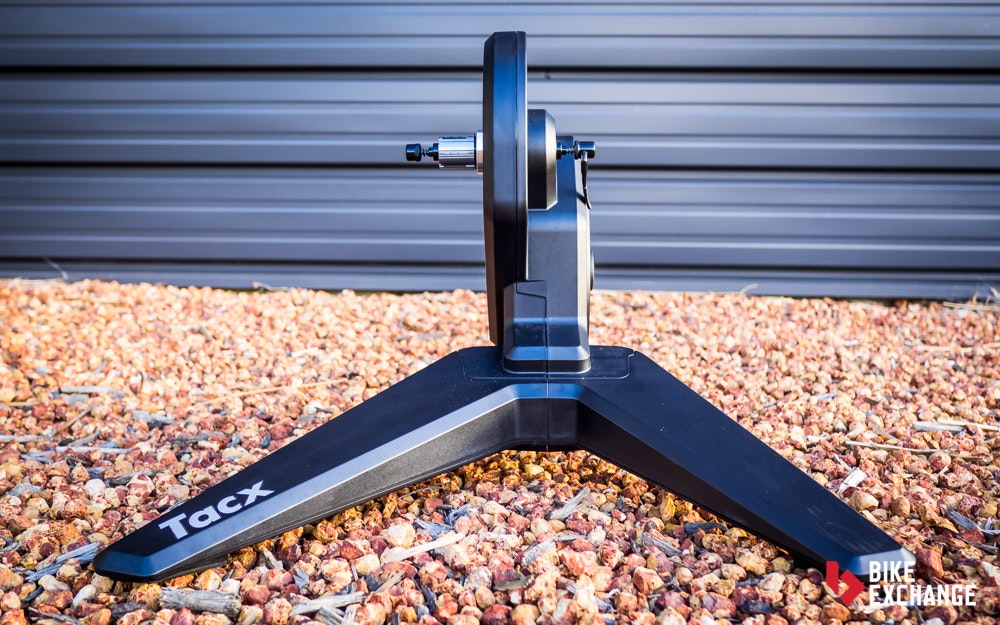
Top of the trainer tree from Tacx is the Neo Smart, which CyclingtTips' Matt de Neff previously reviewed, followed by the Genius Smart and then the new Flux Smart (discussed here), then three other Smart models sit below. The biggest discrepancy between each of these models from a user point of view is the accuracy, maximum slope, and maximum wattage. As the models work their way down each of these factors reduces by a considerable margin. The Neo Smart has exceptional <2% accuracy, 25% maximum slope and 2,200 maximum wattage which is equivalent to even more on the road and far beyond the capacity that most (if not all) of us could ever require.
Sitting in the mid-range of Tacx's line-up, the Smart Flux still boasts impressive <5% accuracy, 10% max. slope and 1,500 max. wattage. The unit provides cadence, power and distance without any other devices attached, additional information can be provided by third party applications which we'll discuss below. Matt is planning on using his set of Info-Cranks (a highly accurate and reliable power based crankset system) to assess the <5% accuracy claim.
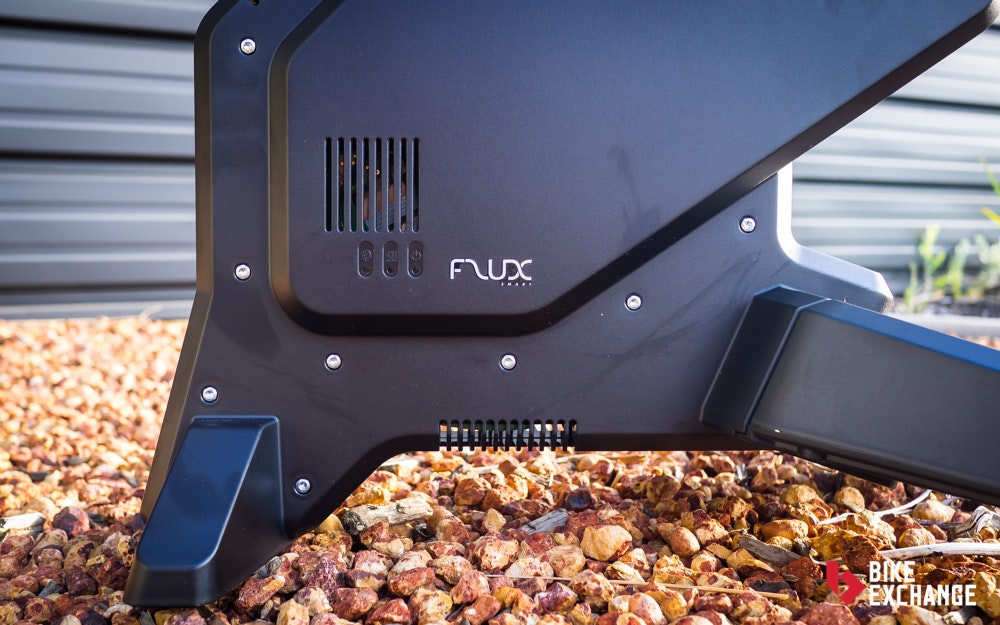
The Smart Flux connects wirelessly via ANT+ or Bluetooth to smart phones, tablets and sports watches which make it possible for third-party applications like Zwift and TrainerRoad to control the user experience. The technology also allows for multiple devices to be connected simultaneously. The unit has three simple LED lights on the side to alert you when it is connected to power and ANT+ or Bluetooth. If technology is not your thing, the trainer can still be used on its own and will simulate a flat road.
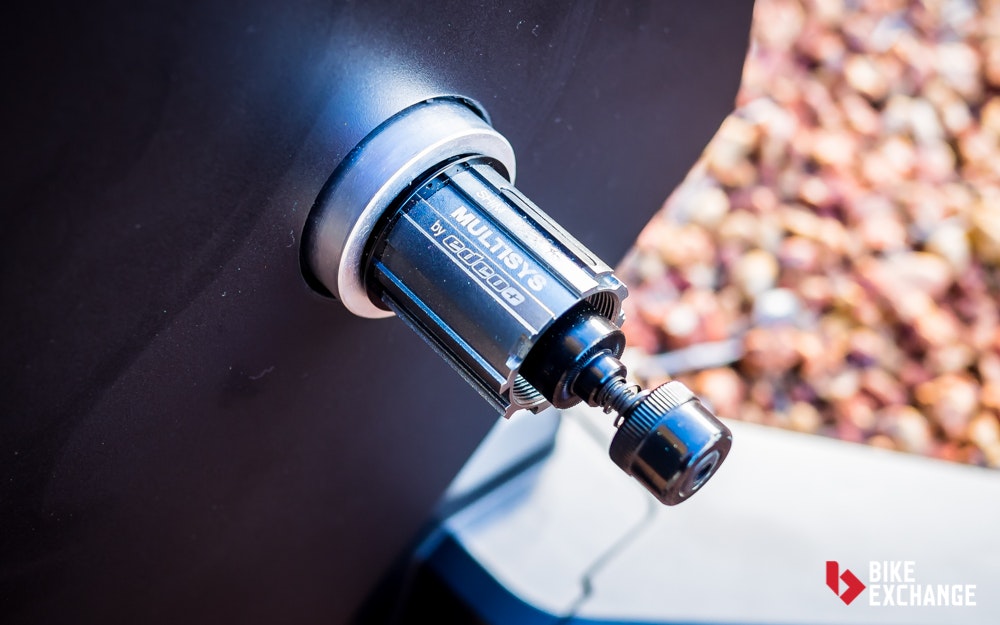
The unit has compatibility for road and mountain bikes to be connected with quick release skewers supplied in 130mm and 135mm lengths. Tacx state adapters are available for other rear widths and axle types, however, point out that bikes with long cage rear derailleurs won't fit into the unit. Regardless of your choice of cassette, the Smart Flux can likely accommodate it. All 9, 10 and 11-speed cassettes from SRAM and Shimano are compatible, as are the majority of Campagnolo cassettes, aside from 9, 10 and 11-speed Centaur and 10-speed Veloce. Spacers, 11 and 12-gear lock rings, and a hex key is provided so you should be up and going in no time.
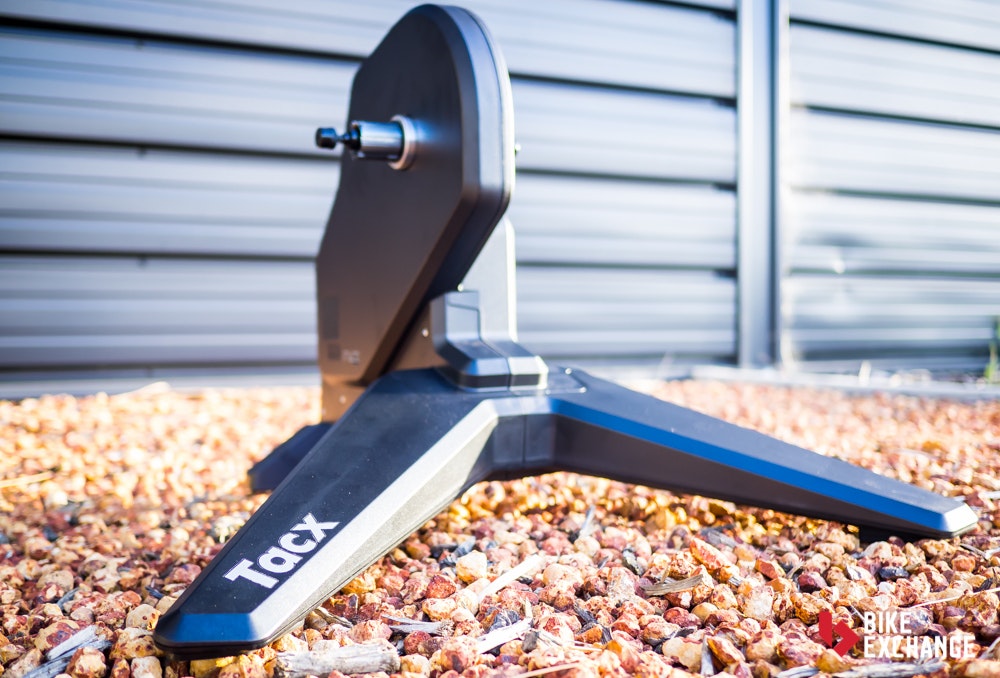
One aspect Matt was keen to point out is the weight of the unit, "it’s heavy (7kg flywheel, 16kg all told) and nothing folds up, so this is not a portable trainer. Sure it can be moved, but it’s better to plan ahead. Find a spot where it can be left." Its footprint is consistent with other direct drive trainers at 670mm length x 650mm width x 465 mm, although those dimensions are skinnier than the top-of-the-line Neo Smart and approximately 5kg lighter.
Matt has had limited time with the Smart Flux so far but has some initial impressions after his first ride. "The trainer is really very quiet (though I was using it outdoors) but there’s a light rumbling from within the unit at low resistances that will drive any mechanic with OCD insane. The changes to resistance are very smooth and subtle. I’ve done one threshold test with it using the Tacx app. Sadly, it presumes I was using a standard crankset. I can change the weight of the bike and my frontal area, but no settings for the gearing that I can find so far."
Details shown here are for the Australian market. Models and specifications for New Zealand may differ slightly so be sure to contact your closest store and have a chat with them. Keep an eye out on CyclingTips for the full review.
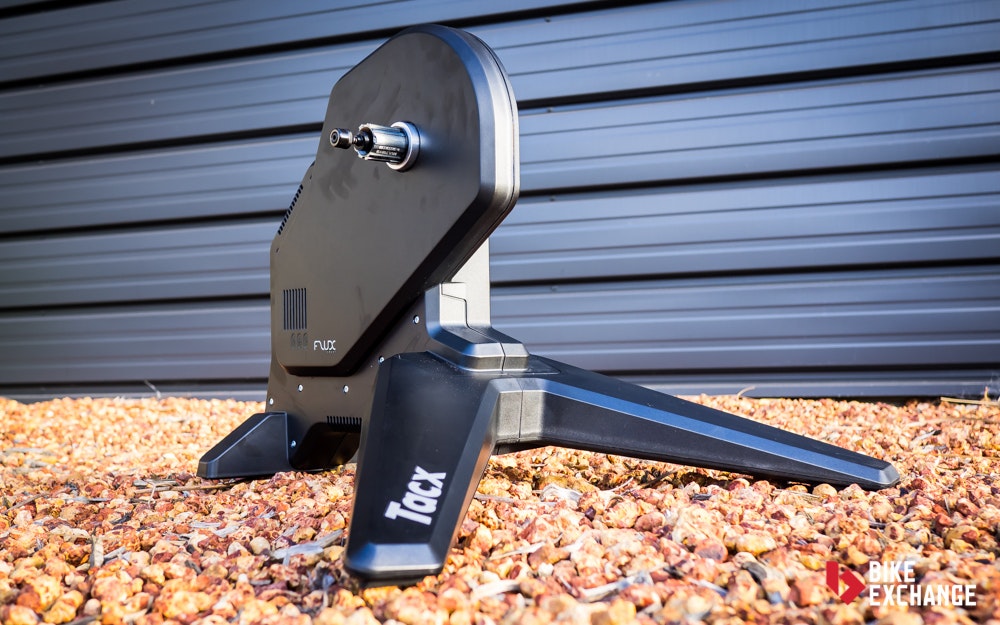
Follow BikeExchange: Email | Facebook | Twitter | Instagram | YouTube | STRAVA





